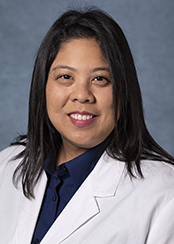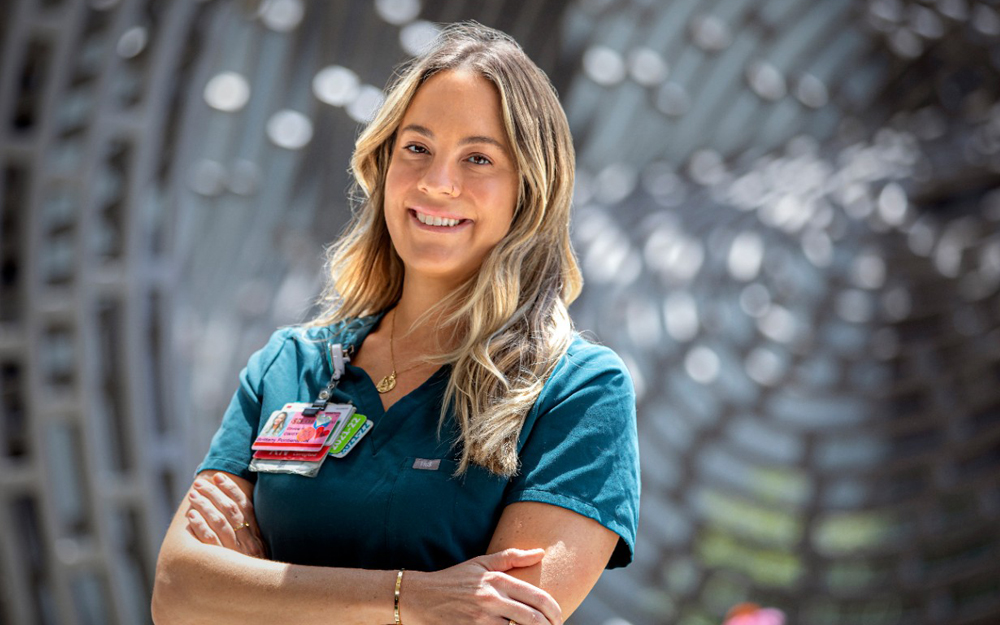New Tool Helps Doctors Reduce Patients? Preeclampsia Risk
Date
March 5, 2024

Date
March 5, 2024
Credits
Medical providers featured in this article

In Brief
{{cta-block}}
Low-dose aspirin can reduce the risk of preeclampsia—a common pregnancy complication—but only if patients know they should take it.
Doctors don’t always realize when pregnant women are at risk of preeclampsia, particularly if they’re Black. But a new pop-up alert that appears in pregnant patients’ medical charts at Cedars-Sinai now helps OB-GYNs identify these patients to help make sure they are prescribed low-dose aspirin to reduce their risk.
"This has been one of the more successful implementations of a best-practice advisory," said Melissa Wong, MD, a maternal-fetal medicine specialist at Cedars-Sinai. She created the pop-up alert, which debuted in March 2022.
"Whenever we focus on disparity issues, we ultimately end up increasing quality of care for everybody."
{{providers}}
Preeclampsia is a condition that only arises during pregnancy. During the second or third trimester, patients develop telltale signs of the condition, including high blood pressure and protein in the urine. Preeclampsia can threaten the lives of mothers and babies, and the only treatment is delivery.
Reducing preeclampsia risk leads to healthier pregnancy outcomes. Low-dose aspirin helps decrease preeclampsia risk by 30% among patients who are at moderate or high risk. Aspirin therapy is the standard of care for these patients, who begin taking aspirin daily from between 12 and 16 weeks of pregnancy up until delivery.
There are more than a dozen risk factors for preeclampsia. Some—including having diabetes, high blood pressure or a history of preeclampsia—put patients at high risk of the condition. Others—such as having obesity, being Black, being pregnant for the first time or being at least 35 years old—put patients at moderate risk.
Black patients are at higher risk of preeclampsia because of social, environmental and historical inequities, not for biological reasons, according to Wong.
The American College of Obstetricians and Gynecologists recommends that pregnant patients should take low-dose aspirin if they have one high-risk factor for preeclampsia or two moderate-risk factors. However, moderate-risk factors sometimes elude doctors.
"It’s difficult for providers to remember a list of 15 risk factors," Wong said. "We do a really good job remembering high-risk factors. If you have diabetes, chronic hypertension or a previous history of preeclampsia, I’m going to remember to prescribe you aspirin. But we tend not to remember the combinations of multiple moderate-risk factors as well."
According to research that Wong conducted, Black patients at Cedars-Sinai weren’t identified as candidates for low-dose aspirin as frequently as white patients. This racial disparity inspired Wong to create the pop-up alert. When patients have one high-risk factor or two moderate-risk factors, the pop-up asks OB-GYNs if they’re giving the patients low-dose aspirin.
"If you hit 'accept,' it drops an aspirin order in their chart," Wong said. "You can choose not to order it, but you have to say why."
In the year and a half since the introduction of the pop-up alert, "we’ve eliminated the racial disparity," said Wong, who is now studying whether the alert has helped lower preeclampsia rates among Cedars-Sinai patients.
Wong is also creating a patient-facing calculator to help pregnant women determine whether they should be taking low-dose aspirin to reduce their preeclampsia risk, based on personal factors.
"I was honestly surprised there isn’t a calculator like this available online," Wong said. "We want to help patients self-identify because of the importance of early identification. They can then discuss the results with their OB-GYN. They might even use the calculator before their first prenatal visit, since a fair number of patients nationwide don’t have their first appointments until the second trimester."
Although Wong initially created the pop-up alert to enable more Black women to be identified as candidates for aspirin therapy, her work is benefiting all pregnant patients at Cedars-Sinai.
"Whenever we focus on disparity issues, we ultimately end up increasing quality of care for everybody," Wong said.



